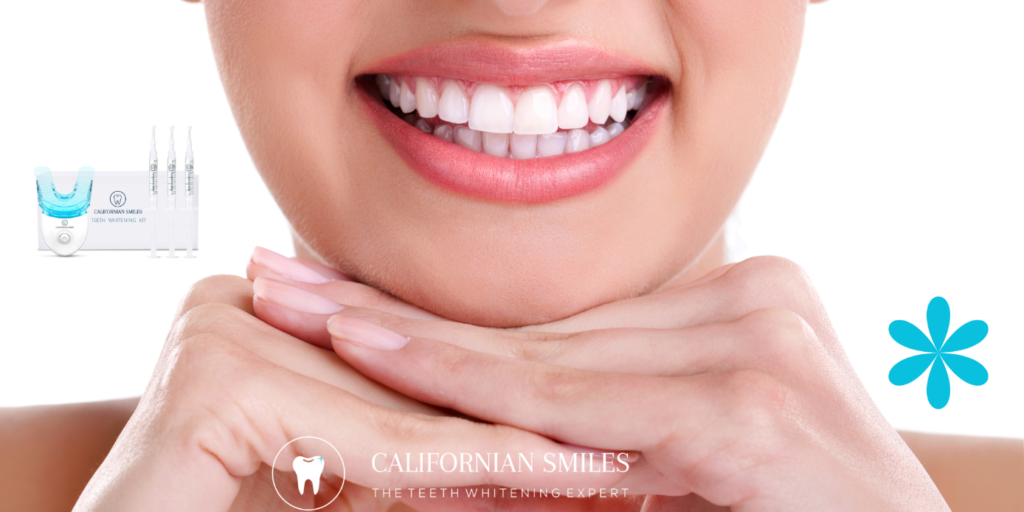Using the Teeth Whitening Kit: Are There Any Side Effects to Take Into Account?
This post was last updated on December 10th, 2024
Explore the potential side effects of teeth whitening kits and learn how to minimize them for a bright and confident smile.

Achieving a bright smile with a teeth whitening kit, which is a popular solution for those looking to achieve whiter, brighter teeth, is a tempting prospect for many. As with any aesthetic treatment, it is important to take into account possible side effects before starting the whitening process.
Using a teeth whitening kit may cause some side effects, although these are usually temporary and manageable.
Here’s a look at the most common side effects associated with using teeth whitening kits, along with tips for minimizing them.
It is important to understand that the teeth whitening process varies from person to person. This process is generally gradual. Factors such as natural tooth color, level of staining, and tooth sensitivity can all affect the time it takes to achieve significant results. From the first use, you may sometimes notice a slight improvement in the color of your teeth. Frequently, most people notice an improvement in the color of their teeth after just a few uses. However, significant results generally appear after several regular uses of the kit.
But, it is important to approach the teeth whitening process with patience and realism. Everyone reacts differently to whitening treatments, and it is essential to give the product the time it needs to work while maintaining realistic expectations for results.
Temporary tooth sensitivity
One of the most common side effects of tooth whitening is a temporary increase in tooth sensitivity. This sensitivity can occur when whitening agents penetrate the enamel to reach the underlying tooth layer called dentin, and it may manifest as mild pain or a tingling sensation, especially in reaction to hot, cold or sweet foods. This sensitivity tends to gradually decrease after stopping treatment. It is therefore advisable to use products containing desensitizing agents or to choose a kit specifically formulated for sensitive teeth.
Gum irritation
Whitening products can sometimes irritate the gums, especially if the whitening gel comes into contact with the soft tissues around the teeth. This irritation is usually temporary and can be avoided by ensuring the gel is applied carefully and does not spill over onto the gums. Gum protectors or properly fitted mouthpieces can also help reduce this risk.
Enamel damage
Although rare, enamel damage can occur, especially if bleaching products are used excessively or incorrectly. Using products approved by recognized health organizations and strictly following instructions can help prevent this complication.
Uneven bleaching
In some cases, whitening may be uneven, with areas of different tooth color. This may result from uneven application of the gel or natural differences in the structure of the enamel. Following the instructions for use carefully and avoiding overloading the gel on certain areas can help minimize this problem.
Aesthetic imbalance
For those who have dental restorations like crowns or fillings, it is important to note that whitening agents do not affect these materials in the same way as
natural enamel. This can cause color differences between natural teeth and restorations, leading to an uneven smile.
Allergic reactions
Although rare, some people may develop allergic reactions to ingredients found in teeth whitening kits. Before using a new product, it is recommended to do a skin test to check for any potential sensitivities or allergies.
Irritation of the oral mucosa
Excessive or incorrect use of the kit may result in irritation of the oral mucosa, especially if the whitening gel comes into contact with the cheeks or tongue. Following the instructions carefully and using the mouthpieces provided can help avoid this problem.
Dry mouth
In some cases, there are people who may experience dry mouth after using the teeth whitening kit. This is usually caused by mouthpiece use, which can reduce saliva production. To minimize this dryness, you should drink plenty of water before and after dental treatment.
To avoid these side effects,
Choose whitening kits approved by recognized dental authorities.
Strictly follow the instructions regarding frequency and duration of use.
Be sure to carefully follow the instructions included with the kit and not use the product for longer than recommended.
Use a soft-bristled toothbrush and toothpaste for sensitive teeth during tooth whitening treatment to minimize tooth sensitivity.
Our teeth whitening kit has been clinically tested and is considered safe for at-home use. Certainly, some minor side effects may occur in some people. Side effects like feeling temporary tooth sensitivity after using the teeth whitening kit. A sensitivity usually caused by exposure of dentin.
Please note that these side effects are generally minor and disappear on their own shortly after stopping the tooth whitening treatment. In the event of a serious or persistent effect, you should consult your dentist or doctor.
Although the side effects are minor and temporary, it is important to take precautions and follow the instructions for use to minimize any discomfort or compilation.
If you have any concerns, please do not hesitate to contact us and ask questions so that we can provide you with information in a detailed and timely manner.
You may like this
Recommended For You
Alterations to Your Diet to Aid Musculoskeletal Pain
Most Inside
Most Inside offers high-quality recommendations and valuable updates to enhance all aspects of your life, providing premium guidance and enriching experiences.




